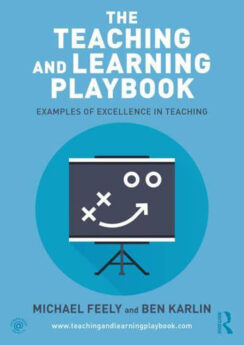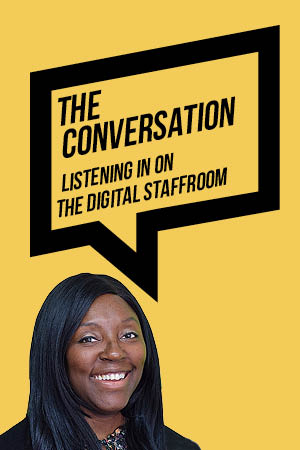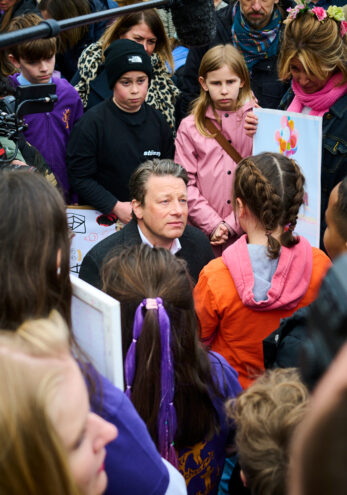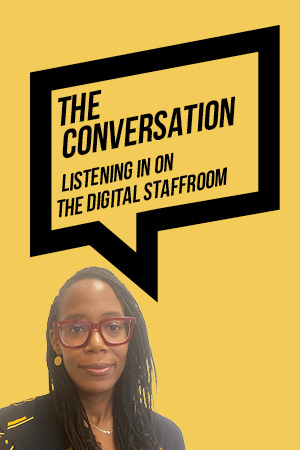Publisher
Routledge
ISBN 10
1032187093
Published
30 Nov 2022
There was a time in education when teacher training presented pedagogical competence as a rather elusive beast, developed over time through trial and error. A nod to behaviour management (“Don’t smile until Christmas,”) and resourcing (card sorts), and then you were sent off to observe more experienced members of staff teach. Your mission: to try to figure out for yourself what it was they were doing that made 9F5 work productively, lesson 5 on a Friday, when all they did in your lesson was throw glue sticks.
Times have changed, thankfully, and educational research has provided us with tried-and-tested teaching strategies which can be learned and practiced, fast-tracking the slow grind of the trial-and-error approach to working out what’s beneficial to pupil learning (and safeguarding our precious glue stick supplies).
Michael Feely and Ben Karlin’s Teaching and Learning Playbook is the most recent offering in what is becoming quite a library of volumes attempting to codify a collection of effective pedagogical approaches. It openly acknowledges the influences of the forefathers of the genre – Hattie and Yates, Lemov, Sherrington and Caviglioli – and attempts to combine its practical advice in such a way that the book can be used as part of a coaching programme.
The first section of the book unpicks the barriers that stand in the way of teachers getting better: a lack of models of excellence, limited working memory, the curse of knowledge, lack of trust and time, and the lack of deliberate practice.
These are explored in an evidence-based way that feeds directly into the delivery of professional development. For example, the ‘morning morality effect’ suggests time of day for teacher CPD can affect its impact: afterschool training sessions, according to the research, take place at the time when we are likely to be least productive, and less honest and vulnerable about our areas of development.
Its use of clear models of excellence make it an invaluable tool
The next four sections of the playbook are focused on classroom practice: routines; questioning and checking for understanding; modelling, explaining and feedback; and resilience, independence and retrieval. Each provides a comprehensive set of ‘plays’ that any teacher could dip into to find excellent practice for common teaching issues.
The final two sections (‘curriculum’ and, rather vaguely, ‘beyond the subject classroom’) seem more relevant for leaders, covering areas such as curriculum planning and running meetings. Teaching reading is covered a little superficially in four pages in this final section, which is perhaps not as helpful for primary colleagues.
That aside, the format of the book is incredibly user-friendly: each technique is covered on two pages, offering a brief summary of the method, its importance in the classroom (including Hattie’s effect size), how it should be performed, and potential unhealthy mutations to avoid. These steps are clear, concise and, importantly, achievable as part of an incremental coaching programme.
In addition, the book is intended to be used alongside videos on the accompanying website www.teachingandlearningplaybook.com, a training tool modelling excellent practice for each strategy in short and explicit clips. Unlike watching a colleague magically transform 9F5 into model students, the videos see the students arrive at the lesson fully tamed. This feels a little far removed from real life, but the focus is on the script for the teacher and the videos helpfully break down the technique into actionable steps.
For colleagues who have been in education long enough to see OHPs evolve into visualisers, the playbook might sound oversimplified or formulaic, and some of the plays in this book won’t be revolutionary (using literacy codes for marking, for example). But, as the authors explain, the average teacher’s learning curve begins to plateau after three years in the classroom, and a codified approach can mitigate unconscious observer bias, and help give specific and useful feedback. The playbook is therefore a useful professional development tool for leaders and teachers alike, whether new or experienced.
Recent research from the Ambition Institute on modelling evidenced-based practice suggests that adding modelling to professional development helps to bridge the theory-practice gap. The Teaching and Learning Playbook’s premise of using clear models of excellence to evaluate teaching performance, combined with its video library, means it is an invaluable tool for teacher development. Its approach to developing a shared language of excellence and setting high standards for teaching is accessible and actionable – without a card sort in sight.













Your thoughts